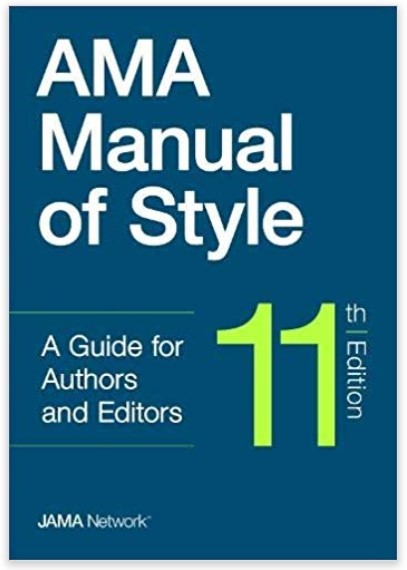We are pleased to announce the 11th edition of the AMA Manual of Style, now live at https://www.amamanualofstyle.com/ and shipping in hardcover in a few days.

The manual has been thoroughly updated, including comprehensive guidance on reference citations (including how to cite journal articles, books, reports, websites, databases, social media, and more), an expanded chapter on data display (for the first time in full color), a completely up-to-date chapter on ethical and legal issues (covering everything from authorship and open access to corrections and intellectual property), and updated guidance on usage (from patient-first language and terms to avoid to preferred spelling and standards for sociodemographic descriptors).
The section on nomenclature has undergone thorough review and updating, covering many topics from genetics and organisms to drugs and radiology.
The statistics and study design chapter has been extensively expanded, with more examples of usage and terms that link to a related glossary.
Chapters on grammar, punctuation, abbreviations, capitalization, manuscript preparation, and editing feature refreshed examples and new entries (such as allowance of the “singular they”).
The nearly 1200-page book is enriched by a variety of online features. For example, regular updates to address changes in style or policies will be featured in the Updates section. Any corrections will be made online so that you are always looking at the latest guidelines as you use the manual.
New quizzes will be posted to help new or continuing users learn to master the finer points of AMA style, and the units of measure calculator offers easy conversions between the SI system and conventional units, as well as the metric system.
We welcome questions and comments on the manual: write to stylemanual@jamanetwork.org or find us on Twitter (@AMAManual). We look forward to engaging with you. –Stacy Christiansen, for the AMA Manual of Style Committee
